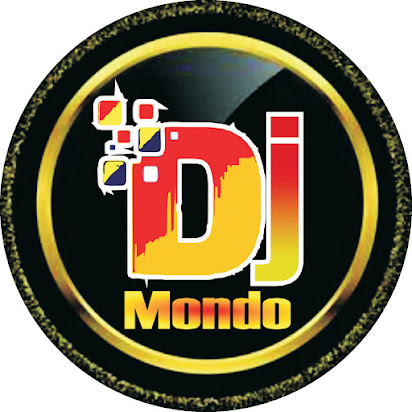How Music Can Be a Tool for Healing
Music has been a universal form of expression for centuries, transcending cultures and languages. Beyond entertainment, music possesses a profound ability to heal—emotionally, mentally, and even physically. Whether you’re feeling stressed, recovering from a loss, or dealing with chronic illness, the therapeutic power of music is undeniable. In this article, we’ll explore how music can be a tool for healing and the science behind its incredible effects.
1. The Science Behind Music and Healing
Music’s healing properties are rooted in its impact on the brain and body. Listening to music stimulates the release of dopamine, the “feel-good” neurotransmitter, which can elevate mood and reduce stress. Additionally, studies show that music activates various areas of the brain, including those responsible for emotions, memory, and physical coordination.
Reduced Stress Levels: Music with a slow tempo and calming tones can lower cortisol levels, the hormone associated with stress.
Improved Heart Health: Rhythmic music can synchronize with the heartbeat, promoting relaxation and reducing blood pressure.
Enhanced Brain Function: Music therapy has been used to help patients with neurological conditions like Alzheimer’s and Parkinson’s disease.
2. Emotional Healing Through Music
When words fail, music speaks. It has a unique ability to convey emotions and help people process their feelings. For individuals coping with grief, anxiety, or depression, music can provide solace and a sense of connection.
Expression of Emotions: Writing or playing music allows individuals to articulate emotions they might struggle to verbalize.
Catharsis: Listening to or performing emotionally charged music can provide a release, offering relief from built-up tension or sadness.
Mood Elevation: Upbeat and positive tunes can shift a person’s mood, helping them focus on the brighter side of life.
3. Music Therapy: A Proven Approach
The music therapy is a clinical practice that uses music interventions to achieve therapeutic goals. Certified music therapists work with individuals to address a variety of physical, emotional, and social challenges.
For Mental Health: Music therapy has been shown to reduce symptoms of PTSD, anxiety, and depression.
For Physical Rehabilitation: Rhythm-based exercises help stroke patients regain motor skills and coordination.
For Pain Management: Listening to music can distract patients from pain and discomfort during medical treatments.
4. Music as a Stress Reliever
Stress is a common challenge in modern life, and music is one of the simplest ways to combat it. Incorporating music into your daily routine can significantly enhance relaxation and improve overall well-being.
Relaxation Playlists: Soft, instrumental music or nature-inspired sounds can create a calming atmosphere.
Mindful Listening: Focusing on the intricacies of a song can be a form of meditation, helping to quiet a racing mind.
Breathing Exercises with Music: Synchronizing deep breaths with a slow-paced song can amplify its calming effects.
5. Healing Through Musical Creativity
Creating music is just as healing as listening to it. Engaging in songwriting, playing an instrument, or singing offers a constructive outlet for emotions and promotes a sense of achievement.
Songwriting for Self-Reflection: Writing lyrics can help individuals process personal experiences and gain clarity.
Learning an Instrument: The focus required to learn and play an instrument can serve as a mental escape and a confidence booster.
Singing for Joy: Singing, whether in a choir or alone, releases endorphins and oxytocin, fostering happiness and social bonding.
6. Music and Social Connection
Music has a unique way of bringing people together, fostering a sense of community and belonging. This social aspect is especially healing for those feeling isolated or lonely.
Group Music Therapy: Participating in group sessions builds a supportive environment where individuals can share their experiences.
Community Choirs and Bands: Joining a musical group offers both creative fulfillment and social interaction.
Shared Playlists: Exchanging playlists with friends or loved ones can strengthen emotional bonds and provide mutual support.
7. Music for Sleep and Relaxation
Sleep is a critical component of healing, and music can play a significant role in improving sleep quality. Relaxing tunes before bedtime can help you unwind and fall asleep faster.
Lullabies for All Ages: Soothing melodies aren’t just for children; they work wonders for adults too.
White Noise and Ambient Music: These genres mask disruptive sounds, creating an optimal environment for rest.
Sleep Playlists: Curated playlists of slow, instrumental tracks can ease you into a restful state.
8. Cultural Perspectives on Music and Healing
Different cultures have long recognized music’s healing power, incorporating it into traditional practices and rituals.
Drumming Circles: Indigenous cultures use drumming as a form of healing, promoting relaxation and community.
Chanting and Mantras: Many spiritual traditions use repetitive vocal sounds to induce a meditative state.
Healing Dances: Dance and music often go hand in hand, combining physical movement with rhythmic healing.
9. Creating Your Own Healing Playlist
Crafting a personalized playlist is a great way to harness music’s healing power. Here are some tips:
Identify Your Needs: Choose songs based on your emotional or physical state. For relaxation, opt for slow, soothing tracks. For energy, pick upbeat songs.
Explore New Genres: You might discover unexpected favorites by branching out.
Update Regularly: Keep your playlist fresh to maintain its impact.
10. Incorporating Music into Daily Life
Integrating music into your daily routine is simple and rewarding. Here are a few ideas:
Morning Motivation: Start your day with an upbeat track to set a positive tone.
Work and Study: Use instrumental or ambient music to improve focus and productivity.
Evening Wind-Down: Play calming tunes to transition from a busy day to a peaceful night.
Final Thoughts
Music’s ability to heal is a gift that everyone can access. Whether through listening, creating, or sharing, music offers endless possibilities for emotional, mental, and physical well-being. By embracing its therapeutic power, you can find comfort, strength, and joy in the melodies that resonate with you.
What role does music play in your healing journey? Share your thoughts in the comments below!



